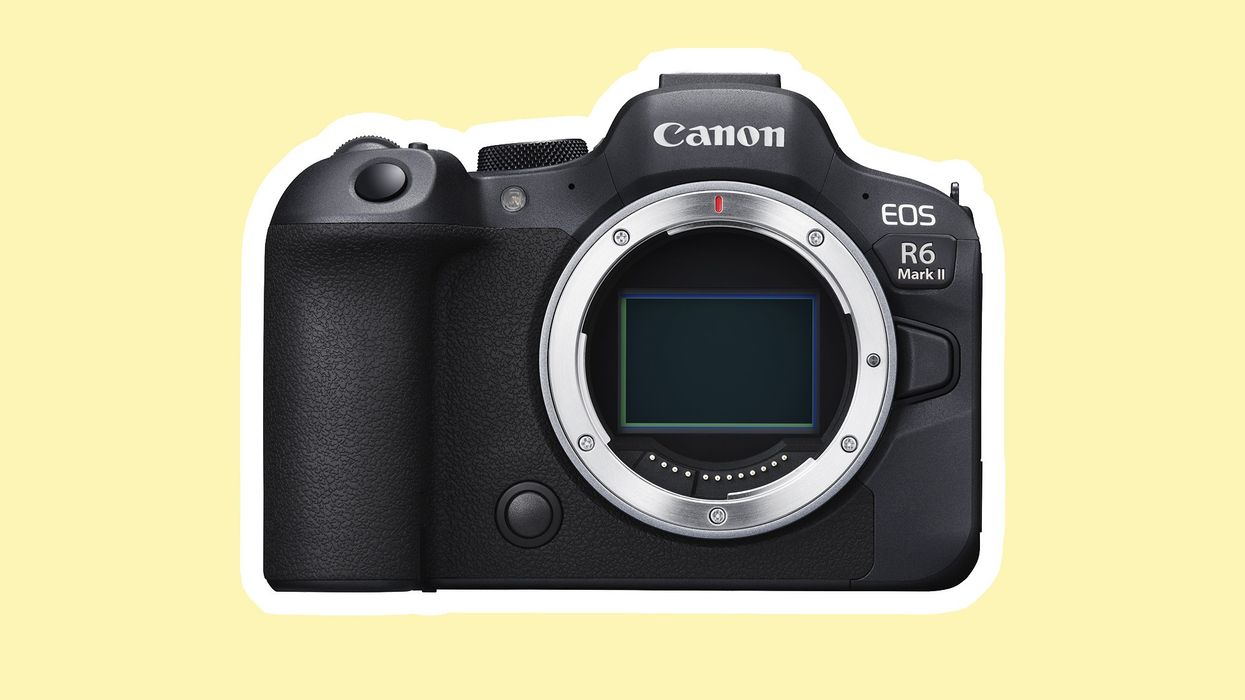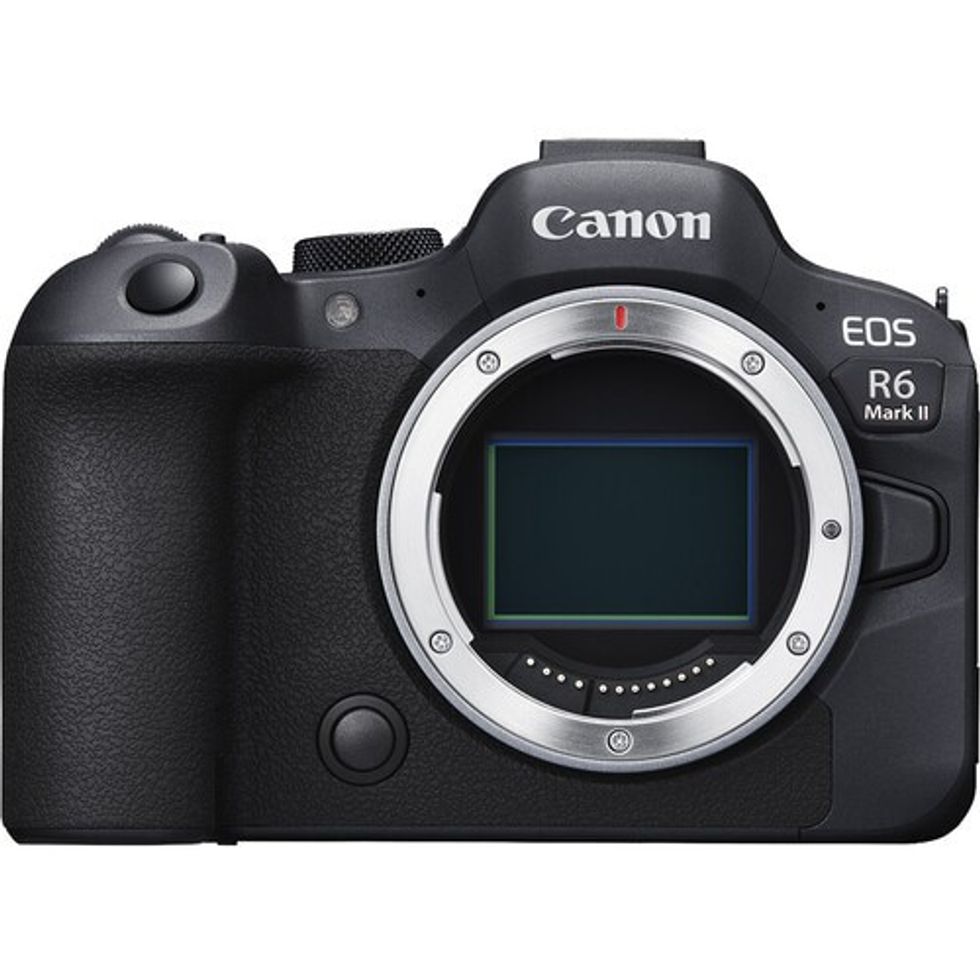The Canon EOS R6 Mk. II Is the Mid-Tier Upgrade We've All Been Waiting For
Canon's second-generation R6 offers a similar form factor with just enough new features to make it an appealing backup. But is it enough to be your primary?

Canon has officially released the Canon EOS R6 Mk. II and insiders say that it is a remarkable improvement over the original, with impressive additions that make it closer to the R3 than the original R6.
Let's dive in!
Beauty on the Inside
Boasting a 24.2 CMOS Image Sensor with a DIGIC X processor, the Canon R6 Mk. II has 40 frames per second electronic shutter burst capture (12 fps mechanical) and an expanded shooting buffer for capturing the action before it takes a moment to write to its dual SD media card slots. The electronic burst mode drops to the 12-bit color, however, while the mechanical option keeps at 14-bit color Raw at 12 fps.

Expanded Autofocus Features
The camera also has an improved second-generation Dual Pixel CMOS autofocus system (DPAFII), which will provide not only eye lock autofocus but the whole gamut of locking in on everything from trains, planes, and automobiles to animals like horses or zebras. There is also an auto subject detection option, which lets the shooter opt to let the camera decide what it is seeing. Users can also select which eye to focus on when in eye detection mode.

Canon has also added a detect-only AF mode, which tracks autofocus even when the subject moves out of frame. This will keep the subject in focus, rather than the camera racking to background focus and having to hunt back to the subject when they come back in the frame.
Video Capture Up to 6K
The new camera can capture 6K RAW video internally, which can either be routed to an external recorder like an Atomos Ninja V+ with ProRes RAW or downsampled internally to 4K at 60 per second. This is available with C-Log 3 (for increased dynamic range) and 10-bit 4:2:2, along with slow motion at 120 fps in 1080p. The camera also supports HDR via PQ as well.
Other recording options include IPB, IPB Light, H.265, and H.264 MP4. Canon has also added the option of going aperture priority or shutter priority in video mode, rather than all automatic or all manual options, which are also still available. With so many shooters going solo, this is a nice addition to automate your workflow.

Long-Form Video Limitations
While recording longer-form content, Canon has eliminated the arbitrary time limit of 30 minutes before shutting down to keep the camera cool. This is a blessing for those long-form interviewers that don’t want to cut off to move to another take, which can break the flow.
According to Canon, the R6 Mk. II can capture over forty minutes oversampled at 4K60p or up to six hours at 4K30p.

There is also pre-recording available in either three- or five-second buffers, which stream the video through the buffer on standby, enabling users to begin to capture before hitting the recording button when enabled. Canon has also added a direct button that enables users to select between video and stills with a simple slide from one to the other, and an on/off lock button.
Other Features
Other features include improved in-body image stabilization (IBIS) with up to 8-stops of IS when in concert with the optical lens stabilization on a Canon lens. There is also a multi-function digital hot shoe that supports external XLR microphones, such as the Tascam CA-XLR2d with an adapter.
The camera also has an articulating LCD touchscreen that is standard on their cameras these days and a 3.69 million dot electronic viewfinder with a refresh rate of 120 fps. The camera uses the same LP-E6NH batteries as the previous generation and supports the Canon BG-R10 battery grip with up to 50 percent more battery life when using the LCD screen. Kudos to Canon for respecting users enough to resist the urge to make them repurchase accessories they already have in that regard.

Onboard tools also include a false color exposure indicator. While we haven't checked every mirrorless camera on the market, the R6 Mk. II seems to be the first one with such a feature. However, when shooting in video assist mode and in C-Log3, the false color indicator is disabled. There is also an HDR Moving Subject mode to capture in HDR even when the subject is in motion. Canon has also added a focus-breathing correction option.
The R6 Mk. II features updated Bluetooth Vs. 5 and 5GHz WiFi with high-speed file sharing and file transfer when connected to a smartphone. For video content creators relying on Camera to Cloud, this could be of tremendous benefit should Canon offer a firmware update to support it. Fuji and RED already offer native C2C with Frame.io integration, but we’ll have to wait and see if Canon will follow suit.
Thoughts, Price, and Availability
All told, the EOS R6 Mk. II is a solid camera with some solid features that place the R6 under R3. This makes it a nice secondary camera for professionals while not making other content creators feel they are missing out if it's their only camera of choice.
Canon EOS R6 Mark II

- 24.2MP Full-Frame CMOS Sensor
- 4K60 10-Bit Internal Video, C-Log 3
- External 6K ProRes RAW Recording
- Dual Pixel CMOS AF II
- 12 fps Mech. Shutter, 40 fps E. Shutter
- Sensor-Shift 5-Axis Image Stabilization
- 3.69m-Dot OLED EVF
- 3" 1.62m-Dot Touchscreen LCD
- Dual UHS-II Memory Card Slots
- Multi-Function Shoe, Wi-Fi and Bluetooth











